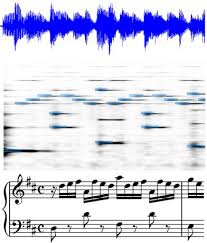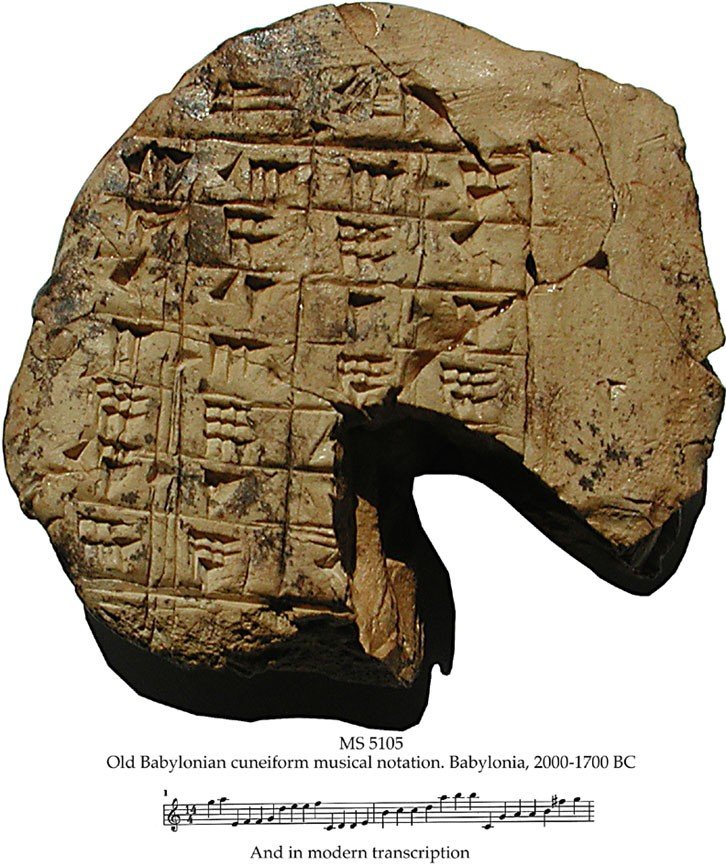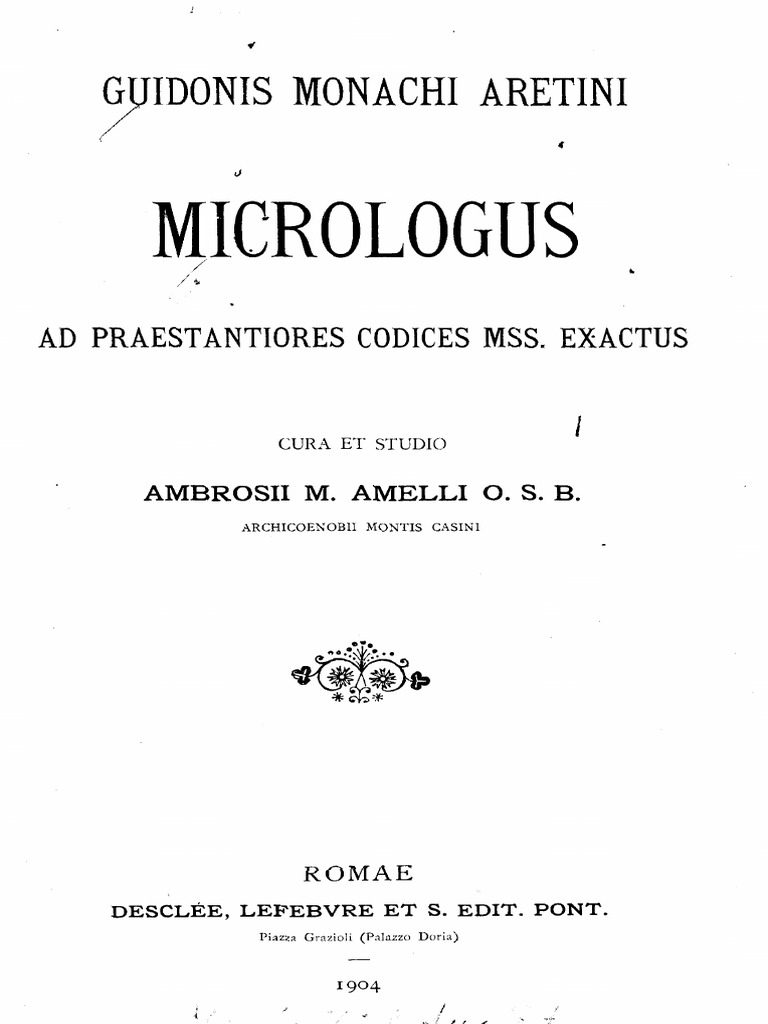José Fornari (Tuti) – fornari @ unicamp. br – July 19th, 2022
translated and expanded by the author from the original article
Music is an art made of sonic events ordered in time. Once that sounds are intangible informational entities, which in fact occur as “music” only at the moment of performance, music is known as the most immaterial of all forms of art. For the preservation and study of a musical composition, it is necessary to have a method to register it, either as an acoustic process or through the use of symbolic data. Acoustic recording only became technologically possible at the end of the 19th century, with the advent of the phonograph, in 1877. Before that, only the “symbolic” recording of music was possible, which normally occurs through what is now known as “musical notation”. This form of programming (or recipe) describes the process of recreating a musical performance, which is the event of sound generation, where the composition manifests itself in the form of a sequence of steps strongly ordered over time, which, if performed correctly and well, by one or more musicians, allows the creation of a musical event with sufficient perceptual similarity for it to be recognized by listeners as a new performance of the same musical composition.
 |
Representation of the acoustic data of a musical excerpt, in the time domain (above), in the frequency domain (middle) and in symbolic data (below) Source: Zhiyao Duan and Emmanouil Benetos. Automatic Music Transcription. Tutorial at ISMIR 2015. |
Thus, musical notation constitutes a method for recording the otherwise intangible art of music making, somehow similar to a cooking recipe or a computer programming code, but here with great emphasis on the sequence and speed of progress of constituent sound events, through which a particular musical performance can be recreated. As musical notation is not the music itself but only its “map”, which is the sequence of steps ordered in time for the musical interpretation in the form of a new performance, it allows, in addition to the composer, the performer to also have a significant creative participation (and so artistic contribution) in the musical process. Through his technique and his creativity, the interpretation of a given musical notation by a musician will decisively influence both the quality and the meaning of a musical performance. As much as is written text to orality, musical notation has been and will always be an important method of registering a musical creation, both for analyzing and understanding and expanding the possibilities of the creative (i.e. artistic) process of a musical composition.
 |
| Source: https://www.schoyencollection.com/music-notation/old-babylonia-cuneiform-notation/oldest-known-music-notation-ms-5105 |
There are historical evidences of musical notations much older than those used in ancient Greek music. For example, the notation that was used in Mesopotamia (present-day Iraq) dated to 14 BC. This notation was written in the form of cuneiform writing (made with wedge marks on clay slabs). In ancient Greece, musical notation was written on papyrus paper, where the melody was already organized in tetrachords, that is, groups of 4 notes where the tuning of the first and last (the fourth) note are separated by an interval of a perfect fourth. The tuning of the two intermediate notes was mobile, according to the tetrachord genre used. In this period, tetrachords were thought of descending, that is, from the highest note to the lowest note.
 |
| Source: https://www.opentextbooks.org.hk/ditatopic/2386 |
According to Aristoxenus, the most natural and ancient tetrachord is the diatonic, as it has maximum pitch intervals between consecutive notes of about one tone. The diatonic scale, composed of two of these tetrachords, has been known even before ancient Greece. It is formed by a succession of six perfect fifths. For example, the diatonic scale of C is created by the following sequence of fifths: F-C-G-D-A-E-B. These notes can be rearranged consecutively in the form of two tetrachords: C-D-E-F and G-A-B-C, or just C-D-E-F-G-A-B-C which is the diatonic scale.
 |
| Source: https://www.guitarnoise.com/guide/diatonic-chords/ |
The musical notation that precedes the current musical staff, with 5 lines (pentagram), is called neume (from the Greek word “pneuma” meaning “breath”). Neumes normally indicated only the melodic contour, without reference to its rhythmic division. Guido D’Arezzo, a Benedictine monk from the 10th century, is credited as the one who created modern musical notation, although in this period the songs continued to be written on 4-line staves and in hexachords; a groups of six notes organized in the diatonic form but where the seventh note one (which would be the B note of the C diatonic scale) was removed in order to avoid the occurrence of the tritone between the fourth and seventh degrees (for C scale, F and B), an interval that was called at that time “diabolus in musica“, or “the devil’s interval” as this was considered a very dissonant interval by the musical aesthetic standards of that period but that since them has been ubiquitously used in all musical genres. Guido D’Arezzo’s most famous work is the treatise “Micrologus” which analyzes Gregorian chant and polyphonic music.
 |
Source: https://www.scribd.com/doc/316059199/Guido-D-Arezzo-Micrologus-pdf |
Between the 14th and 16th centuries, the Renaissance period occurred in Europe. Music in this period evolved from the medieval style, where only perfect intervals of unisons, octaves, fifths, and fourths were considered consonant, to also encompassing thirds and sixths as consonant intervals. Thus, the proliferation of polyphonic musical structures occurred, where several “voices” (interrelated melodies) start to coexist in the same piece of music, in a harmonically interconnected fashion. This led to the development of what is known as “counterpoint” techniques, whose main theorist was Gioseffo Zarlino, considered to be the most important musical theorist since Aristoxenus. In his book “Le istitutioni harmoniche”, Zarlino presented several counterpoint rules, describing composition techniques for two or more simultaneous voices, as well as dealing with other modes of tuning the musical scale, such as the mesotonic temperament, considered a precursor of the current mode, the equal temperament tuning.
Other important musical theorists of the Renaissance (among many) were Nicola Vicentino (who studied microtonal scales and sound volume in music) and Vincenzo Galilei, father of Galileo Galilei, who made important discoveries in acoustics, especially for the relationship between taut strings and air column inside tubes for the production of tonal sounds. It is important to remember that it was in the Renaissance period that the invention of printing press took place, by Johann Gutenberg, which decisively contributed to the proliferation and diffusion of musical knowledge, through the printing and publishing of books, treatises and musical scores.
References
John Haines. “The Origins of the Musical Staff”. The Musical Quarterly, Volume 91, Issue 3-4, October 2008, Pages 327–378, https://doi.org/10.1093/musqtl/gdp002. Published: 04 May 2009
Claude V. Palisca. “Guido of Arezzo”. In Deane L. Root. Grove Music Online. Oxford Music Online. Oxford University Press.
M. L. West. “Ancient Greek Music”. Clarendon Press. 1992
